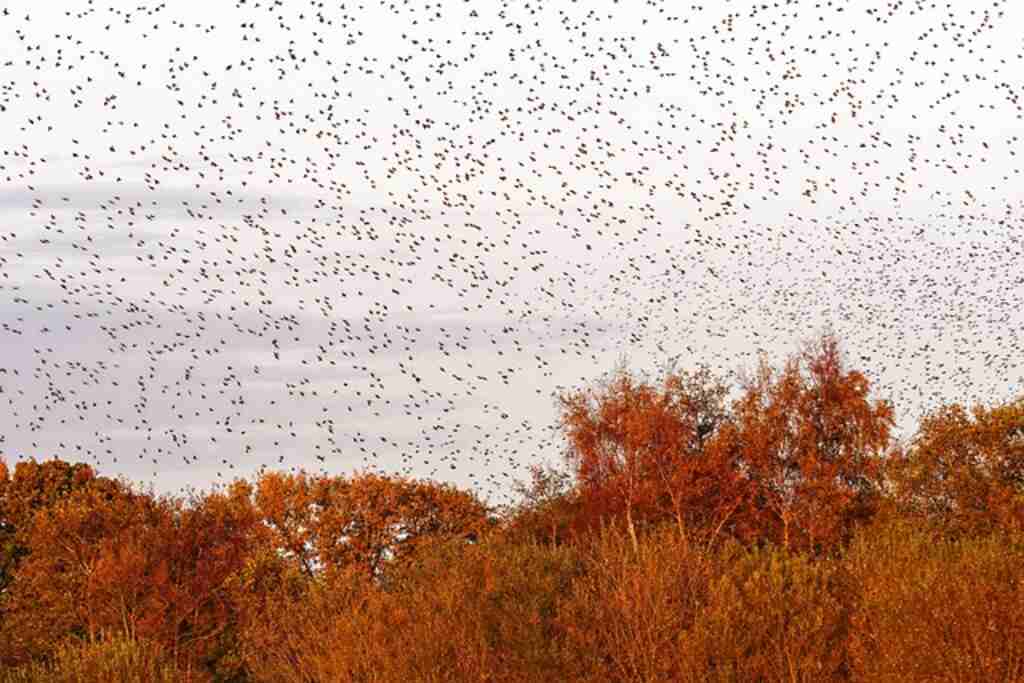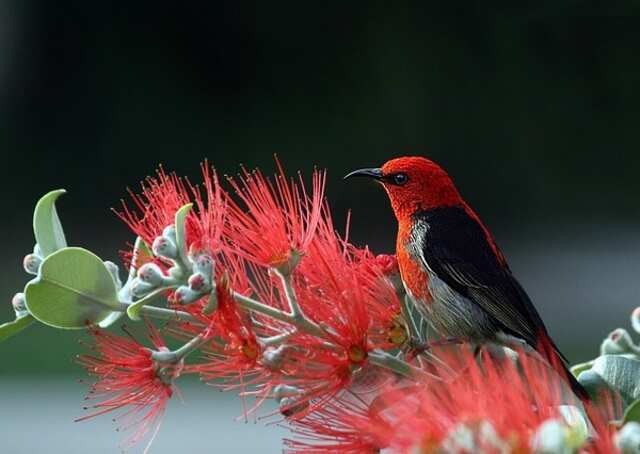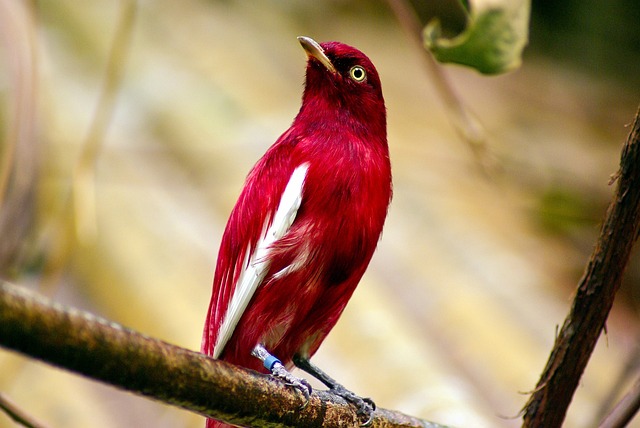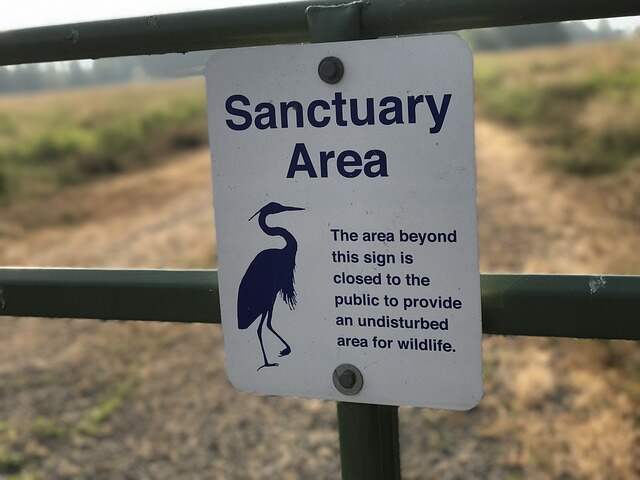Have you ever wondered just how many different bird species populate our planet? From the colorful parrots of the Amazon rainforest to the majestic eagles soaring over mountains, birds exhibit an incredible diversity that spans every corner of the globe.
In this exploration of avian biodiversity, we explore the fascinating world of birds to uncover the answer to a fundamental question: How many species of birds exist worldwide? Join us as we embark on a journey to understand the remarkable diversity and ecological significance of these feathered creatures.
Table of Contents
- 1 How Many Bird Species Are There in the World?
- 1.1 Understanding the Basics of Bird Identification
- 1.2 An Overview of Global Populations and Habitats
- 1.3 Estimating the Total Existing Species of Birds
- 1.4 The Role of Taxonomy in Recording Bird Species Data
- 1.5 Factors Contributing to Speciation within Avian Groups
- 1.6 Geographic Isolation
- 1.7 Adaptive Radiation
- 1.8 Hybridization
- 1.9 Human Impact on Avian Speciation
- 2 Assessing Vulnerable Birds Rarely Seen in Nature
- 2.1 Exploring the Habits of Elusive Bird Species
- 2.2 Understanding Why Certain Birds Are Rarely Seen in Nature
- 2.3 Investigating Conservation Efforts Aimed at Protecting Vulnerable Bird Species
- 2.4 Investigating Threats to Endangered bird Species Survival
- 2.5 Advancing Effective Strategies for Bird Conservation Efforts
- 2.6 Empowering People Around the World Through Awareness & Education
- 2.7 Exploring Opportunities to Contribute Scientifically & Creatively
- 3 Author
How Many Bird Species Are There in the World?
As of 2023, there are around 11,032 bird species recognized in the world. This number can fluctuate slightly due to changes in taxonomic classification and the ongoing discovery of new species. However, it is generally accepted that the total number of extant bird species falls within the range of 10,800 to 11,032.
Understanding the Basics of Bird Identification
Understanding the basics of bird identification is essential for any bird enthusiast or nature lover. Birds are one of the most diverse and fascinating groups of animals, with over 11,000 known species. Identifying birds can be challenging, but it can also be a rewarding and enjoyable experience.
The key to bird identification is to pay attention to their unique characteristics, such as plumage, voice, size, and behavior. Familiarizing yourself with these traits and learning how to use field guides, apps, and other resources can help you identify a wide range of bird species.
One of the most important aspects of bird identification is understanding the taxonomy of birds. This involves understanding the different families, genera, and species of birds, as well as the characteristics that define each group. Once you understand the basic taxonomy of birds, you can begin to identify them by their physical characteristics, habitat, and behavior.
With practice and experience, you can develop the skills and knowledge needed to identify a wide range of bird species, and appreciate the beauty and diversity of these remarkable creatures.
An Overview of Global Populations and Habitats
Birds are one of the most diverse and widespread animal groups on Earth, with over 11,000 species and an estimated 50 billion individual birds worldwide. These birds are adapted to a wide range of environments, from lush tropical rainforests to barren deserts, and play important ecological roles in various ecosystems.
To estimate the number and distribution of bird populations, scientists use various methods such as field surveys, statistical modeling, and remote sensing. The avian biodiversity assessment (ABA) is a global census that estimates the number of existing bird species.
Additionally, threats like habitat loss, climate change, and pollution can negatively impact bird populations and their habitats. Consequently, researchers are constantly seeking new ways to protect and conserve these essential keystone species, as well as to learn more about their global populations and habitats.
Estimating the Total Existing Species of Birds
Birds are one of the most diverse groups of animals on the planet, with a vast array of species inhabiting nearly every corner of the globe. Estimating the total number of bird species on Earth is a challenging task, as it requires identifying and describing all of the different types of birds that exist in the world.
While the exact number of bird species on Earth is difficult to pin down, current estimates suggest that there may be anywhere from 9,000 to 10,000 unique species of birds in existence. However, this number is likely an underestimate due to gaps in our knowledge about certain groups of birds, and the fact that new species are still being discovered on a regular basis.
One reason that estimating the total number of bird species is so challenging is that birds are found in a wide variety of habitats, from rainforests to deserts to oceans. Additionally, many bird species are migratory, which means that they move between different regions at different times of the year. This makes it difficult to get a complete picture of all of the different bird species that exist on the planet.
Despite these challenges, researchers have made significant strides in recent years towards understanding the full diversity of bird species on Earth. Advances in DNA sequencing and other molecular techniques have allowed scientists to more accurately identify and classify different bird species, and new technologies like remote sensing and bioacoustics are helping to locate and identify bird species in even the most remote and inaccessible habitats.
Overall, while estimating the total number of bird species on Earth remains a challenging task, ongoing research and advances in technology are helping to shed light on the full diversity of birds that exist in the world.
The Role of Taxonomy in Recording Bird Species Data
The field of taxonomy is critical in recording accurate data on bird species. Taxonomy is the science of classifying organisms based on their characteristics and evolutionary relationships, and it is essential in identifying, describing, and naming new species of birds. Without proper taxonomic identification, it would be impossible to keep track of the number of bird species and their distribution around the world.
The process of classifying bird species involves a range of techniques, including analyzing physical characteristics, vocalizations, and genetic markers. Taxonomists use these methods to identify unique traits and characteristics that distinguish one species from another. Once a new bird species is identified, it is given a scientific name and added to the taxonomic classification system, which helps scientists track and study these species over time.
Taxonomy plays a critical role in bird conservation efforts. By accurately identifying and classifying species, researchers can better understand their populations, distributions, and ecological roles, and develop targeted conservation strategies to protect them. Taxonomy is also important in monitoring changes in bird populations over time, as well as identifying new and potentially invasive species.
However, taxonomy is not a perfect science, and there are ongoing debates and controversies surrounding the classification of certain bird species. Taxonomists must use their judgment and expertise to navigate these issues and make informed decisions about the classification of individual species. This can sometimes result in disagreements between taxonomists, leading to multiple classification schemes for the same species.
In conclusion, the role of taxonomy in recording bird species data is critical in accurately identifying, describing, and naming new species, and in developing targeted conservation strategies to protect them. Despite ongoing debates and controversies, taxonomists play an essential role in advancing our understanding of the diversity of bird life on Earth.
Factors Contributing to Speciation within Avian Groups
Speciation is the process by which new species arise through the evolution of distinct genetic characteristics over time. Geographic isolation is one of the factors that can contribute to speciation within avian groups.
When a population of birds becomes separated from the rest of the group due to geographic barriers like mountains, oceans, or deserts, they may begin to evolve independently of the rest of the species.
Over time, the genetic differences between the two groups can accumulate, leading to the development of new species.
Geographic Isolation
Geographic isolation is a process in which a population becomes separated from other populations of the same species by geographic barriers, such as oceans, mountains, or deserts. This separation can lead to the evolution of new species over time, as the isolated population may experience different environmental pressures and selective forces that cause them to diverge from their original population.
One well-known example of geographic isolation in birds is the divergence of the Darwin’s finches on the Galapagos Islands. Each of the 13 species of finches found on the islands evolved from a common ancestor, but through geographic isolation and adaptive radiation, each species developed unique beak shapes and behaviors that allowed them to specialize in different ecological niches. There was also a 14th finch, that was named the Coco Finch, and it was located on Cocos island, in Costa Rica.
Geographic isolation can occur naturally, such as when a population becomes separated by a newly formed mountain range or when sea levels rise and create new islands. It can also occur through human activity, such as the construction of highways or the introduction of non-native species that outcompete or prey on native species.
The study of geographic isolation and its role in speciation is important for understanding the evolution and diversity of bird species. Biogeography, the study of the distribution of species across geographic space and time, can provide insights into the historical and ecological factors that have shaped the diversity of bird species around the world.
It is also important to consider the implications of human activities that lead to geographic isolation and its potential impact on bird populations. Habitat fragmentation, for example, can lead to smaller, isolated populations that are more vulnerable to environmental and demographic stochasticity, as well as increased genetic drift and loss of genetic diversity.
Conservation efforts aimed at mitigating these impacts may include habitat restoration, captive breeding, and reintroduction programs, among others.
Adaptive Radiation
Adaptive radiation is the process by which a single ancestral species rapidly diversifies into a multitude of new species, each adapted to occupy a specific ecological niche. One classic example of adaptive radiation is the evolution of birds, which originated from a group of small bipedal dinosaurs around 150 million years ago.
Birds have adapted to diverse ecological niches, and their anatomical, physiological, and behavioral features vary greatly between species. For instance, the variation in beak shapes and sizes in birds reflects their adaptation to different diets and feeding strategies.
Birds that feed on insects have narrow, pointed beaks, while birds that feed on seeds have short, thick beaks. The variety of bird wings is another example of adaptive radiation, with different species evolving wings for diverse purposes, such as gliding, soaring, hovering, and fast flight.
The Galapagos Islands are an excellent example of adaptive radiation in birds. The Galapagos archipelago is a remote and isolated group of volcanic islands in the Pacific Ocean, where a large number of bird species have evolved to occupy different niches.
For instance, the finches of the Galapagos Islands, famously studied by Charles Darwin, show remarkable variations in their beak sizes and shapes. This adaptation reflects the availability of different types of food on different islands. In contrast, on the island of Hawaii, another remote island chain, the honeycreepers have adapted to a different set of ecological niches, with variations in beak size and shape that correspond to different food sources.
Adaptive radiation has allowed birds to occupy a vast array of habitats, including forests, deserts, grasslands, and aquatic environments. Today, there are over 10,000 species of birds worldwide, with a wide range of anatomical, physiological, and behavioral adaptations that allow them to thrive in their respective environments.
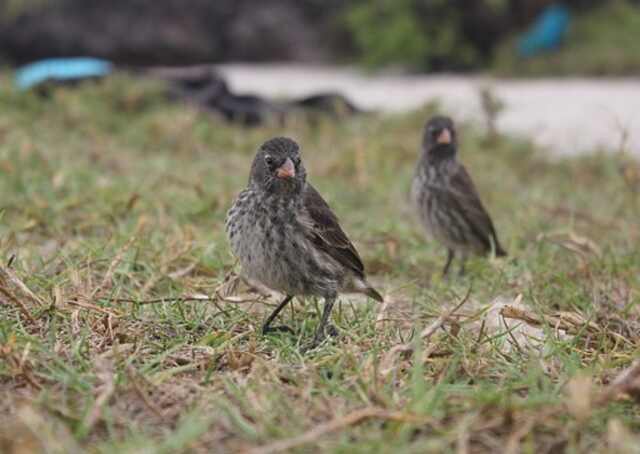
Hybridization
Hybridization refers to the interbreeding between two different species of birds resulting in offspring with mixed genetic traits. It occurs more often than commonly believed and can happen naturally in the wild or be the result of human intervention such as breeding programs.
Some species of birds are more prone to hybridization than others. Factors such as overlapping ranges, genetic compatibility, and habitat disturbance can all play a role. In some cases, hybridization can be a natural mechanism for speciation, leading to the emergence of new species. However, in other cases, it can have negative consequences on populations and ecosystems.
Hybridization can impact bird populations in several ways. For example, it can lead to the loss of genetic diversity, which can weaken the species’ ability to adapt to changing environmental conditions. It can also lead to the creation of hybrid zones, where hybrid individuals dominate over purebred individuals, potentially leading to the decline and extinction of the parent species.
Additionally, hybridization can create genetic swarms that compete with local populations, potentially threatening the survival of unique and endangered species. Despite these potential negative impacts, hybridization can also result in positive outcomes. Hybrid individuals can possess advantageous traits that help them thrive in their environment.
They may also have unique genetic traits that make them better suited to cope with environmental changes. In some cases, hybridization can even play a vital role in the conservation of endangered species.
Human Impact on Avian Speciation
As the world’s population continues to grow, human activity has had a significant impact on the natural environment, including on avian speciation. One of the primary ways humans affect avian speciation is through habitat destruction and fragmentation. As natural habitats are destroyed or split into smaller fragments, it becomes more challenging for populations to maintain gene flow and diverge into separate species.
Human-caused climate change also has a significant impact on avian speciation. As temperatures and weather patterns shift, birds are forced to adapt to new environments or risk extinction. Some species are better equipped to cope with changing conditions, while others are not, leading to differential survival rates and potential speciation events.
The introduction of non-native species, whether intentionally or unintentionally, can also lead to hybridization events between closely related species. Hybridization can sometimes result in novel genetic combinations that lead to new species, but it can also lead to the extinction of one or both parent species.
Human activities such as hunting, pollution, and the spread of invasive species can also have significant impacts on avian populations, leading to declines in certain species and the loss of genetic diversity. This loss of diversity can reduce the potential for future speciation events and further limit the adaptability of bird populations to changing environmental conditions.
To mitigate the negative impacts of human activity on avian speciation, conservation efforts are needed to preserve and restore natural habitats, manage non-native species, and reduce greenhouse gas emissions to slow the effects of climate change.
Such efforts can help to promote genetic diversity and increase the potential for future avian speciation events, thereby ensuring the continued evolution and survival of bird populations around the world.
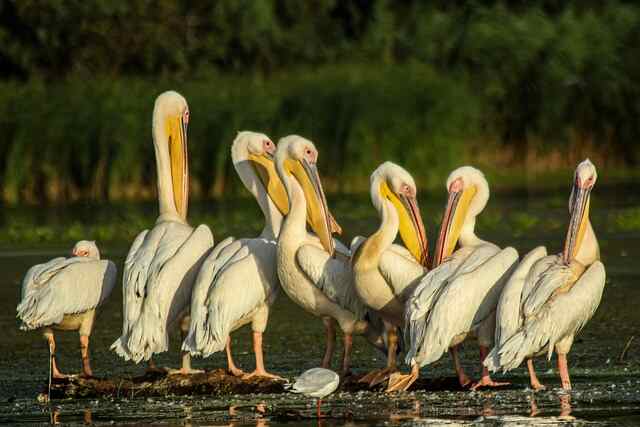
Assessing Vulnerable Birds Rarely Seen in Nature
Exploring the Habits of Elusive Bird Species
Studying the behavior and habits of elusive bird species can be challenging but is crucial in understanding their ecological significance and conserving them. Due to their rarity and difficulty in observation, the habits of some bird species are still largely unknown. One approach to studying elusive bird species is through the use of technology, such as remote sensing and acoustic monitoring.
Remote sensing involves the use of satellite imagery and other high-tech tools to gather information on bird populations, such as their distribution and habitat use. Acoustic monitoring utilizes sound recorders to capture the calls and songs of birds, which can provide insights into their behavior and habitat preferences.
Another approach is through field observation and tracking. This requires specialized skills and equipment to locate and observe these birds in their natural habitats. Researchers may use techniques such as mist-netting, which involves setting up nets to capture birds for banding and other studies. Radio telemetry can also be used to track the movements of birds and gather data on their behavior.
In addition to technology and field observation, collaboration with local communities and traditional knowledge can also be valuable in understanding the habits of elusive bird species. Indigenous knowledge can provide important insights into the behavior and ecology of birds that may not be readily apparent through Western scientific methods.
By gaining a better understanding of the habits and behavior of elusive bird species, researchers can develop more effective conservation strategies and contribute to their long-term survival.
Understanding Why Certain Birds Are Rarely Seen in Nature
Birdwatchers often long to catch a glimpse of rare and elusive bird species, but these birds can be challenging to find due to their elusive habits. Understanding why certain birds are rarely seen in nature requires a closer look at their natural history, including their behavior, habitat, and ecological interactions.
One reason certain bird species may be rarely seen in nature is their behavior. Some species may be active only at night or are highly secretive, making them difficult to spot. Other species may be highly migratory and only present in certain areas during specific times of the year, making them even more elusive.
Habitat is another critical factor in the rarity of some bird species. Some bird species are highly specialized and require specific habitats to survive, such as dense tropical forests or alpine meadows. These habitats may be limited in availability, making the species naturally rare.
Human activities can also play a significant role in making some bird species rare. Habitat destruction, fragmentation, and degradation can significantly impact bird populations, causing them to decline and become harder to find. Overhunting, pollution, and climate change can also have a severe impact on the survival of bird species, contributing to their rarity.
To better understand why certain bird species are rarely seen in nature, researchers may use a range of tools and techniques, such as radio-tracking, camera trapping, and acoustic monitoring. These methods can help researchers gain insight into the behavior, habitat preferences, and ecological interactions of elusive bird species.
Investigating Conservation Efforts Aimed at Protecting Vulnerable Bird Species
As human activities continue to negatively impact the natural world, many bird species are under threat of extinction. The Global Biodiversity Assessment has identified approximately 1,400 bird species as Critically Endangered, Endangered, or Vulnerable, meaning that they are at high risk of disappearing in the near future. Conservation efforts aimed at protecting these vulnerable bird species have become increasingly important.
One such effort is the Red List of Threatened Species, which is maintained by the International Union for Conservation of Nature (IUCN). The Red List provides an assessment of the extinction risk of various species, including birds, and is widely recognized as the most authoritative guide to the conservation status of plant and animal species. Many conservation initiatives for birds focus on protecting and restoring their habitats.
This can involve measures such as the restoration of wetlands, forests, and grasslands, as well as the reduction of habitat destruction and fragmentation caused by activities such as agriculture, urbanization, and logging. Other initiatives may include the establishment of protected areas, such as national parks or nature reserves, where bird populations can thrive in a safe and undisturbed environment.
Conservation efforts also involve monitoring bird populations to assess the effectiveness of conservation measures and detect any population declines or habitat degradation. This can be done through techniques such as bird banding, bird surveys, and remote sensing. By monitoring bird populations, conservationists can gain a better understanding of the specific threats facing different bird species, and adjust their conservation efforts accordingly.
In addition to habitat protection and monitoring, conservationists are also exploring other innovative approaches to protect vulnerable bird species. For example, some initiatives aim to control the populations of non-native predators that prey on bird species, while others are developing captive breeding programs to reintroduce endangered bird species to their natural habitats.
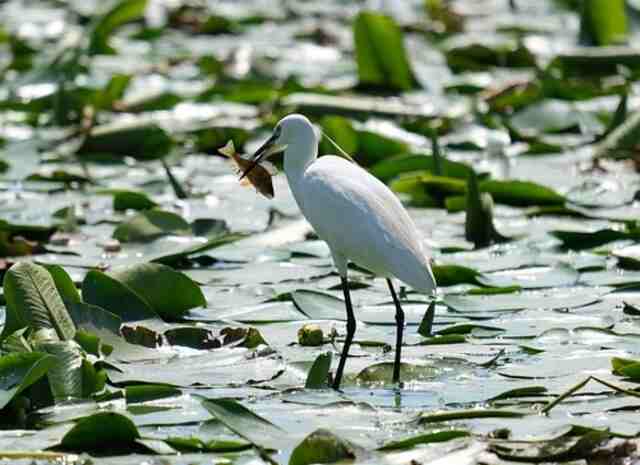
Investigating Threats to Endangered bird Species Survival
Endangered bird species are under threat from a variety of factors, including habitat loss, climate change, and human activity. By understanding these threats, we can develop effective strategies for protecting these vulnerable species. Habitat loss is one of the leading causes of endangered bird species decline. Human activity, including deforestation, agricultural expansion, and urbanization, has resulted in significant loss of natural habitats.
For migratory birds, habitat loss can occur at both breeding and wintering grounds, leading to a decline in population. Climate change can also impact the survival of endangered bird species by altering their natural habitat and food sources, causing shifts in migration patterns, and making them more susceptible to diseases and predators.
Human activity also poses a direct threat to endangered bird species. Birds can be affected by hunting, poaching, and the pet trade, with many species being targeted for their feathers or eggs. Pollution and the use of pesticides also pose significant risks to bird populations, affecting their reproductive success and overall health.
To address these threats, conservation efforts have been implemented to protect endangered bird species. Protected areas have been established to preserve critical habitats for threatened species, and breeding programs have been developed to ensure the survival of critically endangered species.
The International Union for Conservation of Nature’s Red List of Threatened Species is a vital tool for assessing the conservation status of bird species and guiding conservation efforts. By investigating and understanding the threats to endangered bird species, we can take action to protect these vital components of global biodiversity.
Advancing Effective Strategies for Bird Conservation Efforts
Bird conservation is an important and ongoing effort that aims to protect avian species and their habitats. With the growing threats to bird populations such as habitat loss, climate change, pollution, and invasive species, it is crucial to advance effective strategies for bird conservation efforts.
One of the key strategies for bird conservation is habitat protection and restoration. This involves identifying critical habitats for bird species and protecting them from development or other harmful activities. Restoration of degraded habitats can also provide crucial habitat for birds to breed, feed and nest.
Another strategy for bird conservation is captive breeding and reintroduction. This approach involves breeding birds in captivity and releasing them into their natural habitats to increase their populations. This method has been successful in bringing several endangered bird species back from the brink of extinction.
Community-based conservation is another effective strategy for bird conservation. This approach involves working with local communities to promote sustainable use of natural resources and encourage conservation efforts. Local communities play a critical role in conservation by providing valuable information on bird populations, their habitats, and threats they face.
Additionally, bird conservation efforts can be strengthened through education and awareness campaigns. By raising awareness of the importance of birds and their habitats, people can be motivated to take actions to protect them. This can include things like reducing pesticide use, participating in citizen science projects, and advocating for policies that protect birds and their habitats.
Finally, it is important to monitor and evaluate the success of bird conservation efforts. This involves measuring the effectiveness of different strategies and adjusting them as needed. The Global Biodiversity Assessment: Red List of Threatened Species is an important tool for monitoring bird populations and assessing their status.
Empowering People Around the World Through Awareness & Education
Bird conservation efforts require the collaboration of many stakeholders, including policymakers, conservation organizations, scientists, and the general public. Education and awareness-raising campaigns are critical in promoting understanding and support for conservation initiatives. Effective education and awareness programs can help to engage people from all walks of life in bird conservation efforts.
This includes providing information on the importance of birds in the ecosystem, their unique characteristics, and the threats they face. By increasing public awareness, people can take concrete steps to protect and preserve bird habitats and species. Conservation organizations and bird researchers have an important role to play in educating the public. They can do this through community outreach programs, workshops, and online resources that provide information on bird conservation issues.
For example, initiatives like citizen science projects can involve members of the public in bird monitoring and data collection, thereby increasing their understanding of the importance of bird conservation. Furthermore, policymakers play a critical role in developing policies and regulations to support bird conservation efforts.
By making conservation a priority, governments can allocate resources and funding for conservation programs, establish protected areas, and enforce laws to regulate harmful activities such as poaching and habitat destruction.
Exploring Opportunities to Contribute Scientifically & Creatively
One of the exciting aspects of studying bird species is the opportunity for scientists, researchers, and creative thinkers to contribute to ongoing efforts to learn more about these fascinating creatures. In order to deepen our understanding of avian species, there are a variety of ways that individuals can get involved and contribute their unique talents and perspectives.
One area of focus for many researchers and scientists is studying bird behavior, biology, and genetics. By conducting experiments and analyzing data, these professionals can identify key patterns and characteristics that are essential to better understanding bird species and their unique adaptations.
Another important area of focus for bird conservation is the use of innovative technologies and techniques. From drone technology that allows for improved tracking and monitoring of bird populations to advanced mapping software that enables more accurate population estimates, there are a variety of cutting-edge tools that can be leveraged to advance bird conservation efforts.
For individuals who may not have a background in science or research, there are still a variety of ways to get involved and contribute to the field of bird conservation. From volunteering with local conservation organizations to participating in citizen science initiatives, there are many ways to contribute to ongoing efforts to protect bird species and their habitats.
Finally, it’s important to recognize that creativity can also play a vital role in advancing bird conservation efforts. From creating engaging and educational content that raises awareness about the importance of bird conservation to developing innovative art installations that celebrate the beauty and diversity of avian species, there are many ways for creative thinkers to contribute to the cause.
Ultimately, there are many opportunities to get involved and contribute to ongoing efforts to study and protect bird species around the world. By working together and bringing our diverse skills and perspectives to the table, we can make important strides in advancing our understanding of these amazing creatures and safeguarding their future for generations to come.
Related Post: Importance of Bird Conservation: The Vital Role of Birds!

